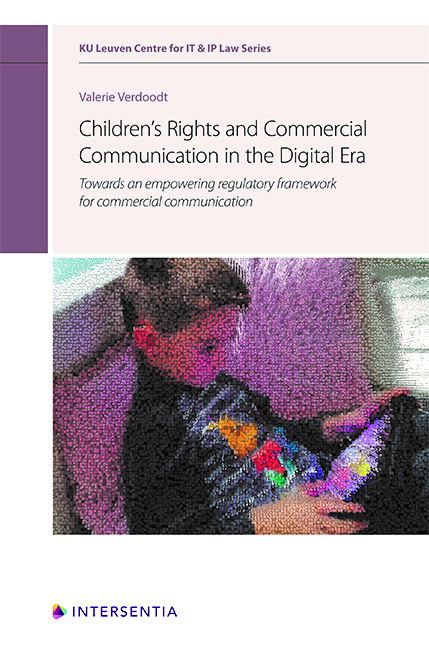 Children's Rights and Commercial Communication in the Digital Era
Children's Rights and Commercial Communication in the Digital Era Book contents
- Frontmatter
- Preface
- Contents
- Abbreviations
- Introduction
- PART I CHILDREN'S RIGHTS AND ADVERTISING LITERACY IN THE DIGITAL ERA
- PART II ASSESSMENT OF THE REGULATORY FRAMEWORK FOR COMMERCIAL COMMUNICATION IN LIGHT OF CHILDREN'S RIGHTS
- PART III ASSESSMENT OF NATIONAL ARIS IN THE AREA OF COMMERCIAL COMMUNICATION
- CONCLUDING REMARKS AND RECOMMENDATIONS FOR THE FUTURE
- Bibliography
- Miscellaneous Endmatter
Chapter I - Retrospective of the Research Undertaken
Published online by Cambridge University Press: 23 July 2020
- Frontmatter
- Preface
- Contents
- Abbreviations
- Introduction
- PART I CHILDREN'S RIGHTS AND ADVERTISING LITERACY IN THE DIGITAL ERA
- PART II ASSESSMENT OF THE REGULATORY FRAMEWORK FOR COMMERCIAL COMMUNICATION IN LIGHT OF CHILDREN'S RIGHTS
- PART III ASSESSMENT OF NATIONAL ARIS IN THE AREA OF COMMERCIAL COMMUNICATION
- CONCLUDING REMARKS AND RECOMMENDATIONS FOR THE FUTURE
- Bibliography
- Miscellaneous Endmatter
Summary
RETROSPECTIVE. Before presenting the recommendations for the regulatory framework for commercial communication aimed at children this section first looks back on the research findings.
PART I, CHAPTER I
PART I. The first chapter of the first part of the book aimed to gain a clearer understanding of the research issues. More specifically, an in-depth analysis was conducted of the constitutive elements of the study (i.e. children and new forms of commercial communication) and the need for a strong and empowering regulatory framework for commercial communication. It also introduced the children's rights perspective. A number of findings can be recalled:
1. As an introduction to the legal research, the advertising techniques and formats that advertisers employ to target children were analysed. Nowadays, children grow up as digital natives in a media landscape that is constantly evolving as a result of technological advancements and convergence. Traditional and new media are being consumed interchangeably and children split their attention between various screens and sources of media. The changes in the media landscape have driven advertisers to transform their approach to commercial communication. In the digital environment, commercial messages are being distributed through a variety of platforms and on numerous devices, such as tablets, game consoles, smart phones and connected televisions. The specific features of new forms of commercial communication – i.e. their integrated, interactive, personalised and emotions-evoking nature – make it difficult for children to apply their advertising literacy skills. These skills entail both identifying the commercial nature of these messages and being able to process the commercial message in a critical manner, as to allow them to make well-balanced commercial decisions and decisions related to their privacy. In this regard, it was concluded that it remains crucial for children to be educated and enabled to understand the persuasive tactics of emerging trends in the area of commercial communication.
2. The protection of children against certain forms of commercial communication can be traced as an important objective throughout the policy history at the international and EU level from 2008 onwards. Three recurring themes were identified. First, the protection of children against the pressure of advertising and marketing in the digital environment. Second, policy makers have clearly recognised the issues related to the collection of personal data for advertising purposes and the need for the protection of children in this context.
- Type
- Chapter
- Information
- Children's Rights and Commercial Communication in the Digital EraTowards an Empowering Regulatory Framework for Commercial Communication, pp. 289 - 298Publisher: IntersentiaPrint publication year: 2020


